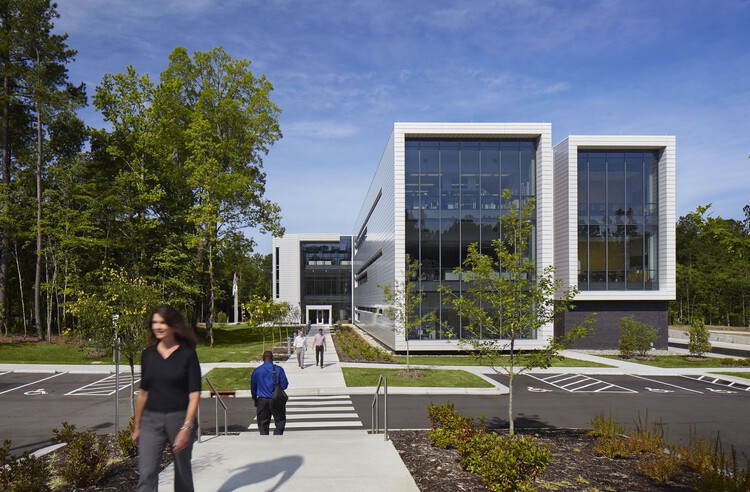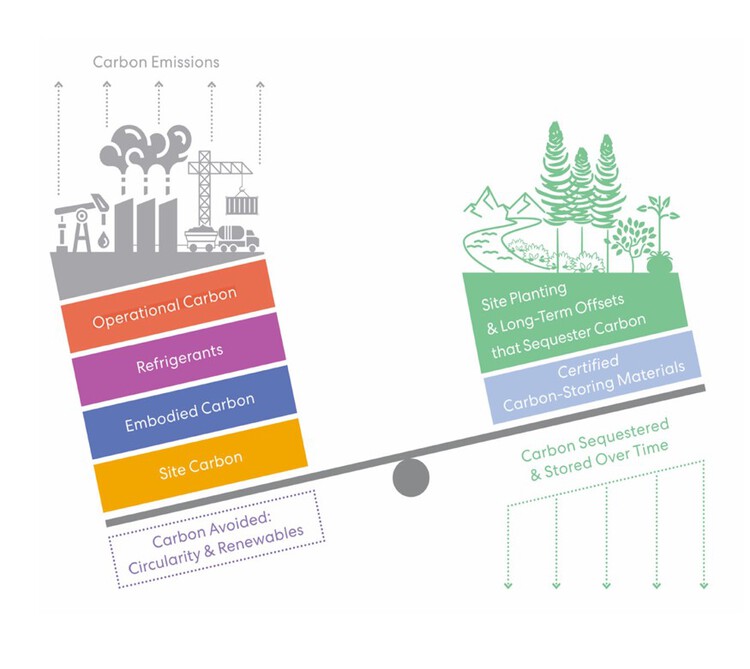
Innovation comes in many shapes and forms. 2025 is poised to witness continued advancements in the areas of artificial intelligence, sustainability, and biotechnology. These breakthroughs often arise from experimentation in industries like technology and healthcare, where companies have strong research and development teams and significant budgets. This enables them to produce new products and services that address society's evolving needs.
In a world confronting complex challenges, innovation in architecture plays a distinctive role. Unlike industries driven by rapid innovation cycles, architecture must balance creativity with practical solutions that are deeply rooted in human experience. What will it take for the architecture industry to fully harness its potential in shaping the future of our built environment?
Interrogating this question, ArchDaily's editor Ankitha Gattupalli spoke to Leigh Christy and Yehia Madkour, architects and co-directors of Research and Innovation at Perkins&Will. Based in the Los Angeles studio, Leigh leads regional projects while also guiding firm-wide research efforts. Vancouver-based Yehia, whose work explores the intersection of design and technology, brings his expertise to the firm's research initiatives, driving innovation across 32 studios. Together, they shape the firm's research direction, advancing new approaches to design and technology.
Related Article
What are Innovation Districts?ArchDaily (Ankitha Gattupalli): How do you define innovation, and how do you believe it is understood when you discuss it?
Leigh Christy (LC): The definition of innovation is not fixed; it evolves over time. Innovation is best understood as the combination of ideation and implementation. While ideation is central to many programs, the focus on research and application is critical for scaling and successful implementation.
Yehia Madkour (YM): Innovation goes beyond just generating a novel idea; it is about the execution of that idea. The true value of innovation lies in the process that follows the initial concept. There are three key steps to innovation:
- The generation of a novel idea.
- The advancement of that idea in a meaningful direction.
- The creation of value, which may be societal, industrial, or personal, rather than strictly financial.

AD: How do you see the architecture industry responding to the concept of innovation?
YM: Architects are in a unique position to connect various elements—working with clients to understand their evolving needs, collaborating with industry partners to adapt to changes, and considering economic, technological, and human factors. This central role allows us to generate innovative ideas. However, the industry, particularly in architecture and construction, tends to lag behind other sectors in terms of technological adoption.
One reason for this is the bespoke nature of design in our field, which presents challenges when attempting to apply standardized innovations. Each project often requires tailored solutions, making it difficult to implement broad, systematic changes like automation. While architects are positioned to generate many ideas, the industry as a whole still faces barriers to embracing innovation at scale.
LC: I believe the approach to problem-solving through design thinking positions architects well to propose innovative solutions. We address challenges at the scale of every project, but what is particularly interesting is how we extend innovation beyond individual projects. We learn from past projects to drive future innovation, developing new tools when needed and remaining open to change when approaches prove ineffective.
While the industry generates novel ideas, implementing systematic change and sharing progress remains inconsistent. Addressing issues like housing and climate change requires a multidisciplinary approach, with architects playing a key collaborative role alongside clients and professionals.

AD: How do you decide which research areas are worth exploring?
YM: Our research areas emerge from a combination of factors, including our understanding of global shifts and client-driven inquiries. Some areas are more focused on immediate applications, while others are more strategic and long-term in nature.
For instance, human experience remains central to our work and will continue to be a major research focus. Another key area is digital layering, as new technologies are continuously emerging, and understanding their integration is critical. We also prioritize urgent issues, such as environmental crises and climate change, which will remain pressing challenges for the foreseeable future.
LC: An example of this approach can be seen in our mass timber research, which began over 10 years ago. It started with exploring its broader application after gaining attention in Vancouver. Initially, challenges like local availability, testing codes, and fire resistance were barriers. By partnering with structural engineers and fire consultants, we advanced the industry, and mass timber is now widely used across North America and Europe. We are now investigating its role in circularity and design for disassembly. While our mass timber research may eventually conclude, it will lead to new inquiries on alternative materials and structural systems.

AD: How do you balance the potential of technology and research with the market's readiness for it?
LC: This challenge ties into how we structure our research agenda. We focus on understanding both current industry needs and emerging questions from our client base. By recognizing patterns, we aim to create solutions that not only address immediate issues but also position us to address future challenges. It's about striking a balance between vision and practicality, ensuring we remain grounded in the current landscape while also preparing for the future.
YM: While we concentrate on solving current needs, we also allocate time for strategic thinking. Some ideas may not be market-ready today, but they help us anticipate trends for the next 5 to 10 years. These long-term considerations may seem speculative now, but they are vital for positioning ourselves for future opportunities. Innovation involves accepting failure as part of the process, but it's essential to plan ahead, not just focus on immediate needs.

AD: How do you integrate different disciplines to drive innovation and manage subject matter expertise on complex issues?
LC: Collaboration is a two-way street. While our external partners bring valuable insights, we provide the projects necessary to test those ideas. This mutual exchange of expertise benefits both parties. Peer review is another critical aspect of our process—before presenting our research as foundational, we seek feedback from others to refine our findings.
Collaborating with specialists has been crucial in our research, such as when exploring toxins in materials or in our work on habitable materials where we learned about carbon footprint and human health. By identifying our specific questions, we can select the most suitable partners to help answer them.
Innovation often requires human connection to move forward - Yehia Madkour

AD: What do you see as the key barriers to innovation in architecture, and how can the industry overcome them?
YM: The primary barrier to innovation in architecture is designing for one solution at a time. While this approach fuels creativity, each project's unique specifics often prevent the scalability necessary for widespread impact. In technology, scalability drives innovation by reaching millions, but in architecture, we often lack the scale to extend the impact of each idea.
The industry would benefit from a systems-thinking approach, where solutions are designed to be scalable and adaptable across different contexts. Without this systemic approach, innovation in architecture struggles to progress at the same pace as other industries. While this may seem like an unsolvable problem, I believe shifting our mindset could unlock a great deal of innovation.

LC: While architecture can certainly adopt more systematic approaches, I've come to realize the importance of having a visionary role as well. Innovation in architecture isn't just about technology; it's about envisioning improvements to the built environment. This involves understanding the process that leads to a successful project, not just the final product.
While it's tempting to look to the tech industry as the benchmark for innovation, there are other equally impactful forms of innovation, such as community engagement. Simple tools, like administering surveys, can make a significant difference in the design process.
While we may not be as advanced in innovation as the tech industry, I believe there is immense potential in architecture to lead in innovation—especially if we embrace a more comprehensive, systems-oriented mindset.












